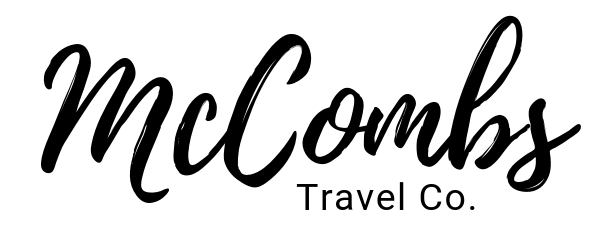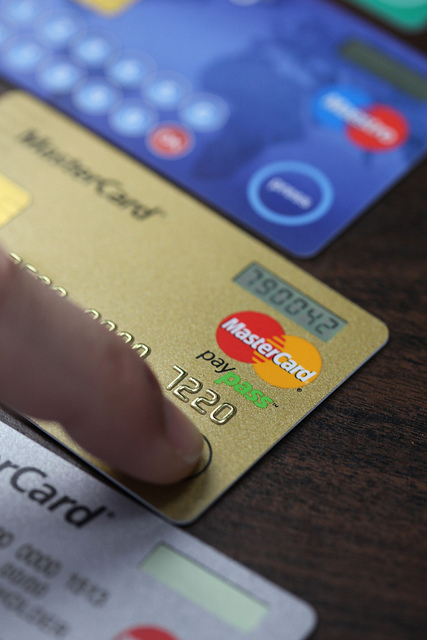A friend directed a question my way today. His question was, “Which credit card for earning miles would you suggest?” Some of you may know that Stephanie and I manage to keep feeding our travel addiction by flying almost exclusively on awards flights. If not for flying free, we plainly couldn’t afford to travel as much as we do. I thought I’d post my response to my friend as a blog entry to help give you all an idea for how we manage to hoard the miles that we do. This entry isn’t an all encompassing explanation, but it does give an overview of why points are worth more in one place than another and why more points isn’t always better. Here’s my response:
Your question of “best credit card for earning miles” couldn’t have a more convoluted answer. Let me know if this makes any sense at all. I tried to make it as clear as I could.
I use these sites to keep up with the latest offers:
The three cards that I’d consider right now would be:
- Chase Sapphire Preferred
- Chase Sapphire Reserve
- Chase Freedom Unlimited
Chase Sapphire Preferred – I carried this as my main points earning card for 5 or so years. It’s $95 a year, and I think the first year is free. There’s currently a 50,000 point signup bonus if you spend $4000 in 3 months. Perks of this card:
- 1 point per dollar spent on all transactions
- 2 points per dollar spent on travel and restaurants
- Points transfer 1:1 to United, British, Southwest, and a few other airlines.
- Includes some free travel insurance and car rental collision insurance.
- No foreign transaction fees
- 25% bonus on travel booked through Chase travel site. (100,000 points is worth $1000 cash, but is worth $1250 in travel through Chase)
Chase Sapphire Reserve – I currently carry this card. I opened it because it had a 100,000 mile signup bonus. It currently is $450 per year and has a 50,000 point signup bonus if you spend $4000 in 3 months. Perks of this card:
- If you spend $300 per year on travel, you get a $300 statement credit. This lowers the annual fee to $150
- Includes free priority pass airport lounge membership.
- Includes free travel insurance and car collision insurance.
- Includes $100 credit for TSA Pre-check or Global Entry fee
- 1 point per dollar spent on all transactions
- 3 points per dollar spent on travel and restaurants
- 50% bonus on travel booked through Chase travel site. (100,000 points is worth $1000 cash, but is worth $1500 in travel through Chase)
- Points transfer 1:1 to United, British, Southwest, and a few other airlines.
Chase Freedom Unlimited – I currently carry this card. I actually downgraded my Chase Sapphire Preferred to this card to avoid the annual fee and maximize my points. This card has no annual fee. It probably has a small signup bonus as well. Perks of this card:
- No annual fee
- 1.5 points per dollar spent on all transactions
Con of this card:
- You cannot transfer these points to airlines; however, you can transfer them to another Chase card and then to airlines. (i.e. Freedom to Reserve. Reserve to airline)
Right now, I carry two cards:
- Chase Sapphire Reserve
- Chase Freedom Unlimited
The reasoning for carrying two cards is simple. There is only a fee on one of them. I keep the Sapphire Reserve open because I need it to transfer points to airlines (points are worth more with the airlines). Also, it gets 3 points per dollar on dining and travel. I keep the Freedom Unlimited open and use it for all purchases that aren’t restaurants or travel because it gets 1.5 points on all purchases.
The two cards that I’d suggest RIGHT NOW are:
- Chase Sapphire Preferred
- Chase Freedom Unlimited
I think the Sapphire Reserve is probably the best card going right now, but it’s an investment. $450, then you have to spend $300 on travel to offset that fee. Easily doable, but you have to front the $450. But the perks are huge. The reason I suggest the Sapphire Preferred over the Sapphire Reserve right now is because the signup bonus on the reserve was cut in half. So, you can get the same signup bonus with either card right now and only front $95 with the Preferred Card. If you need another signup bonus for a boost in 6 months, sign up for the Reserve too and cancel or downgrade the Preferred.
You may see people suggesting cards like Capital One because they have 3 points per dollar spent. Here’s why that’s a bad idea in my opinion. Capital One only lets you use miles within Capital One. You can’t transfer them to airlines. Here’s why transferring points to airlines is really important.
Let’s say you have 120,000 points in Chase or Capital One.
Inside of Chase or Capital One, 120,000 points is worth $1200. If you have Chase Preferred, it’s worth $1500 on travel. If you have Chase Reserve, it’s worth $1800 on travel.
But, if you have one of the chase sapphire cards, you can transfer those points to United Airlines. United Airlines currently charges 120,000 points for 2 roundtrip tickets from anywhere in the US to anywhere in Europe. So, you could book a flight with United that costs $3000, and it costs you 120,000 points. So, now, with United, those points are worth $3000. In Capital One, they’re only worth $1200, and inside of Chase, they’re worth $1800 at most. This is why 3:1 points from Capital One isn’t as good of a deal as it seems, because Capital One traps those points inside their own travel service. The other issue is that inside of Chase and Capital One Travel Portals, airfare is generally more expensive than booking straight through the airline. So, you may see a flight for $800 on United.com, but inside of Chase or Capital One it’s $1100.
Long story short, I carry 2 cards to maximize my miles. If we want to travel, and we’re short, we find another card with a signup bonus that will transfer to the airline we need it to. For us though, Chase has been where we’ve focused most of our efforts.
Hope that helps.


Recent Comments